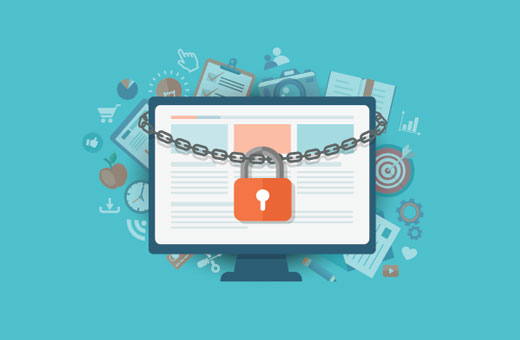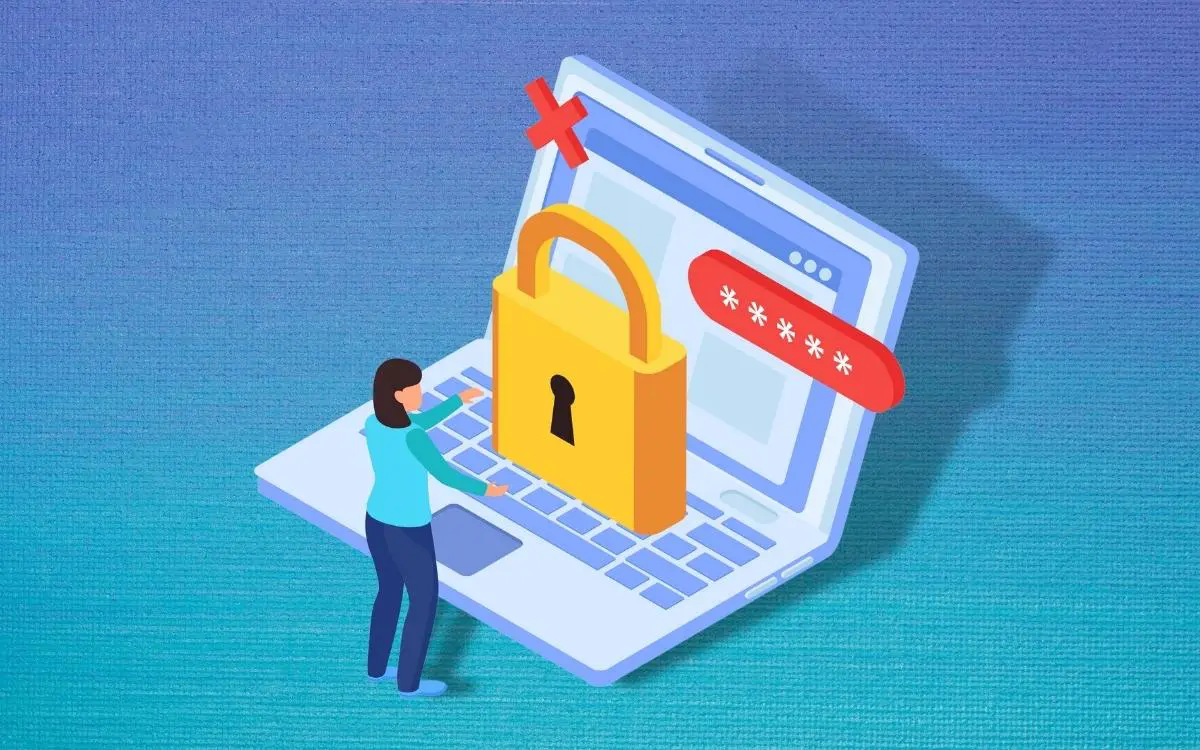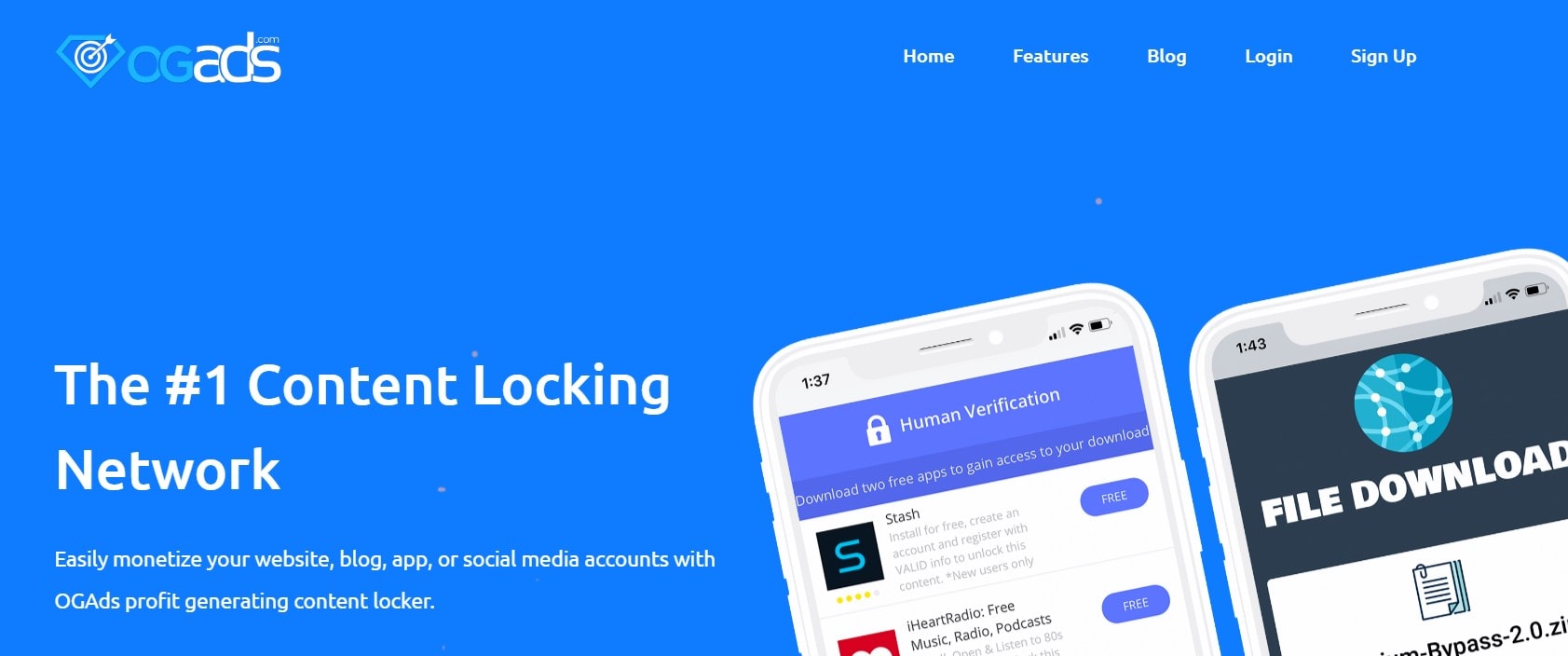In the ever-evolving landscape of online marketing and content monetization, “Content Locking” has emerged as a dynamic and engaging strategy.
The way we use and see stuff online has really changed. There’s a lot of information out there, and people who create content or market things are always looking for new ways to get the attention of their consumers.
So, which side of the fence are you? Are you a person who consumes content, or are you a person who creates it? Either way, it’s important to be aware of the changes in the online landscape.
One thing that’s become popular lately is something called content locking.
Surprisingly, content locking is a good way to get people interested and make them do things like sign up for emails or buy stuff.
Recent numbers show that websites that use content locking see more people getting involved. In fact, studies have found that content locking can make about 30% more people sign up for emails and increase how many people buy stuff by about 20%.
As David Bailey once said: “To get rich, you have to be making money while you’re asleep.”
So, if you are interested in knowing more about content locking and how you can also be a push to your online business, be with me till the end of the article.
What is Content Locking?
Content locking is a marketing strategy that involves restricting access to certain content until a user performs a desired action, such as subscribing to a newsletter, signing up for a free trial, or following you on social media.
Content locking can be a very effective way to generate leads, increase traffic, and grow your audience. It can also be used to protect your content from unauthorized access.
This approach aims to strike a balance between the needs of content creators and the desires of users while also serving as a valuable tool for data collection and lead generation.
Content locking has become particularly popular within the e-commerce industry. Retailers have discovered that by implementing content-locking mechanisms, such as offering exclusive discounts or limited-time offers, they can entice users to make a purchase and foster a sense of urgency and exclusivity.
Furthermore, content locking has proven successful in generating valuable consumer insights. Businesses can gather data on user preferences, demographics, and purchasing behavior by utilizing surveys or questionnaires as part of the content-unlocking process.
This information can then be utilized to refine marketing strategies, tailor content to specific target audiences, and ultimately drive revenue growth.
Why Use Content Locking?
Because numbers don’t lie!
- 73% of B2B marketers say content locking is one of the most effective ways to generate leads.
- 65% of consumers say they are more likely to subscribe to a newsletter with exclusive content.
- 58% of consumers say they have shared gated content with their friends and colleagues.
Boost user engagement – It is an excellent way to boost user engagement. You create a sense of exclusivity and intrigue by presenting users with exclusive content or downloads.
This encourages visitors to actively participate, whether it’s by filling out a survey, subscribing to a newsletter, or sharing the content on social media. In fact, studies have shown that content locking can increase user engagement by up to 40% compared to traditional methods.
Highly effective lead generation tool – When users are willing to provide their contact information or complete a specific action to unlock valuable content, it opens up an opportunity for marketers to gather essential data.
This data can then be used to nurture leads, personalize marketing campaigns, and increase conversions. Research suggests that content locking can boost lead generation by 50% when implemented correctly.
Aids revenue generation – By offering premium content or downloads behind a locked gate, you can create a new stream of income.
This could be selling access to exclusive tutorials, e-books, or other valuable resources. According to industry reports, websites that employ content locking have experienced an average revenue increase of 30%.
Enhances website security and reduces bounce rates – By locking specific sections of your website, you can protect sensitive information and prevent unauthorized access.
Moreover, content locking keeps visitors engaged and reduces the likelihood of them leaving your site without taking any action. Studies have shown that bounce rates can be reduced by up to 20% through content-locking techniques.
- Protecting Private Documents:
Example: Businesses often possess valuable proprietary data that should remain confidential. Content locking can secure these documents, preventing unauthorized access and sharing.
- Preventing Data Leakage:
Example: Content locking can be used to ensure that certain information, like trade secrets or financial data, doesn’t get leaked or shared inappropriately.
- Securing Sensitive Information:
Example: Personal data, such as Social Security numbers, should not be stored in plain text files or accessed by unauthorized personnel. Content locking can help maintain the privacy and security of such data.
Content Locking for Protecting Intellectual Property – Beyond data and documents, content locking is a valuable tool for guarding intellectual property against unauthorized access and theft.
Example: Suppose a business has innovative product designs but lacks the capacity to manufacture them. Content locking can prevent competitors from stealing and replicating these designs.
Caution: Unauthorized users finding ways to bypass content locking can pose significant risks to businesses, potentially resulting in intellectual property theft.
How Can I Lock My Own Content?
Locking content is really easy! My favorite tool for the job is OGAds. This is for a few reasons:
- It simplifies the process of monetizing both mobile and desktop traffic
- It’s simple to use.
- I appreciate how OGAds makes it simple for me to manage my campaigns and track my earnings.
- It allows me to promote iOS and Android apps and offer content surveys and downloads for desktops.
What Content Is Worth Locking?
Content locks seem to be used by two types of people:
- Those who believe their content isn’t worth locking
- And some people believe that everything should be locked.
What type of person are you? In the past, I have always fallen into the first trap. It might surprise you to learn just how much of your content deserves to be locked up.
You can include PDFs, transcripts of videos, images, or useful videos along with your articles, such as infographics.
Do you know –
- 65% of consumers say that they are more likely to subscribe to a newsletter if it offers exclusive content.
- 58% of consumers say that they have shared gated content with their friends and colleagues.
Here are some specific examples of content that can be worth locking:
E-books: E-books are a great way to provide in-depth information on a particular topic. If you have an ebook that is packed with valuable content, it can be worth locking.
White papers: White papers are similar to e-books, but they are typically more focused on a specific problem or solution. If you have a white paper that provides valuable insights into your industry, it can be worth locking.
Webinars: Webinars are a great way to share your knowledge and expertise with your audience. If you have a webinar that covers a topic that your audience is interested in, it can be worth locking.
Case studies: Case studies are a great way to show potential customers how your product or service has helped other businesses. If you have case studies that demonstrate the value of your product or service, they can be worth locking.
Discounts and promotions: If you are offering a discount or promotion on your product or service, you can lock access to it until people sign up for your email list or perform another desired action.
When deciding whether or not to lock a piece of content, it is important to consider the following factors:
- Value: How valuable is the content to your target audience?
- Exclusivity: Is the content unique and exclusive to your website?
- Relevance: Is the content relevant to the interests of your target audience?
- Demand: Is there a high demand for the content?
If you can answer yes to all of these questions, then the content is likely worth locking.
It is also important to note that you should not lock all of your content. You should still have a mix of free and gated content. This will allow you to attract new visitors to your website and generate leads while also providing valuable content to your existing audience.
How To Make Money With Content Locking
You can make money indirectly by building your email list by locking your content. Marketing experts always say that “the money is in the list!” Among the many ways you can make money from your list are:
- Optimizing your product pages to drive repeat traffic.
- Using ads or affiliate offers to drive repeat traffic to articles.
- Get more subscribers by running a viral giveaway contest on your email list.
It’s now possible to make money directly from content locking, and we’ll explore those now.
What Is Content Locking CPA?
Earning money through content locking is a straightforward method known as CPA, which stands for “cost per action.” It’s a way to generate income online by promoting CPA offers, where you receive payment each time someone takes a specific action.
For instance, consider businesses like law offices that are interested in acquiring leads. They might enter into a CPA agreement where you earn a predetermined amount of money for every visitor you send to their contact form, and that visitor successfully fills out the form.
Now, there are companies that enable you to lock content, essentially requiring visitors to complete a certain action, such as taking a survey or entering a sweepstakes, before they can access your content.
Content-locking CPA is a popular way for publishers to generate revenue from their content, especially if they have a high-traffic website or blog. It can also be a good way for businesses to generate leads and sales.
Pros of Content Locking
Maintain Control Over Your Content: Content locking grants you control over what media files, like images, videos, or music, you save to your device. It allows you to curate and manage your content according to your preferences and privacy needs.
Protect Privacy: Content locking is a security feature that safeguards sensitive information, such as credit card details and login credentials, from prying eyes. It ensures that your private data remains confidential.
Prevent Device Damage: By locking content, you reduce the risk of device corruption due to excessive storage usage. This is especially beneficial for older devices that may struggle with managing large amounts of content.
Reduce the Digital Divide: Content locking ensures that everyone can access the content, eliminating restrictions based on specific devices or accounts. It’s particularly valuable for users with limited storage, promoting accessibility and preventing space-related issues.
Privacy Assurance: Content locking effectively safeguards personal information from data collection efforts by the private sector. Even if an app or game provider were to share data with third parties, content locking ensures your personal data remains inaccessible without your consent.
Unrestricted Backup: Content locking allows for unrestricted backups, meaning you can back up your content without worrying about filling up your device’s storage. This offers peace of mind in case of device malfunctions or data loss.
Ease of Content Management: Content locking simplifies the process of saving content to your device. It enhances accessibility and reduces clutter, making it more efficient for users to organize and retrieve their content.
Disadvantages Of Using Content Locking
Impedes Legitimate Sharing: One prominent drawback of employing content locking is its interference with genuine content sharing, which is often a fundamental aspect of the product’s purpose. It hinders users from freely distributing content, which may be counterproductive to the product’s intended functionality.
User Burden: Content locking places an additional cognitive load on users, compelling them to carefully consider each action, such as sharing, instead of resorting to the more convenient and automated sharing options. This added complexity can lead to a less seamless user experience.
You may also read:
- List Of Top Best WordPress Content Locker Plugins(Handpicked)
- Best Content Locker Ad Networks For Publishers/Marketers
- OGAds Review: Is It Still the Leading Content Network?
- Restrict Content Pro vs MemberPress vs MemberMouse (Comparison)
- Content at Scale Review: The Future of Content Creation?
Content locking Conclusion – Start By Understanding It
I sincerely hope this article has provided you with valuable insights into the concept of content locking and its potential applicability to your content strategy.
Content locking is a powerful marketing strategy that can help you generate leads, increase traffic, and grow your business. However, it is important to use content locking strategically and to create content that is valuable and exclusive.
If you are considering using content locking, I encourage you to test it out and see how it works for your business.
Content locking can be a great way to boost your lead generation and sales efforts.







